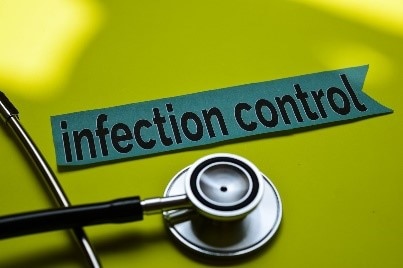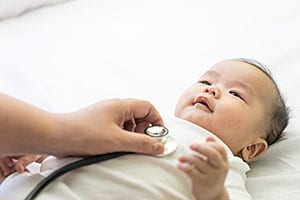Friday, December 23, 2022
What is the most common cause of encephalopathy?
Encephalopathy
Encephalopathy can present a very broad spectrum of symptoms that range from mild, such as some memory loss or subtle personality changes, to severe, such as dementia, seizures, coma, or death.
The causes of encephalopathy are both numerous and varied. Examples of causes of encephalopathy include:
- infectious (bacteria, viruses, parasites, or prions),
- anoxic (lack of oxygen to the brain, including traumatic causes),
- alcoholic (alcohol toxicity),
- hepatic (for example, liver failure or liver cancer),
- uremic (renal or kidney failure),
- metabolic diseases (hyper- or hypocalcemia, hypo- or hypernatremia, or hypo- or hyperglycemic),
- brain tumors,
- toxic chemicals (mercury, lead, or ammonia),
- alterations in pressure within the brain (often from bleeding, tumors, or abscesses), and
- poor nutrition (inadequate vitamin B1 intake or alcohol withdrawal).
These examples do not cover all of the potential causes of encephalopathy but are listed to demonstrate the wide range of causes.
Although numerous causes of encephalopathy are known, the majority of cases arise from several major categories (some examples in parentheses):
Chronic traumatic encephalopathy (CTE)
Chronic traumatic encephalopathy (CTE) is a progressive brain condition that's thought to be caused by repeated blows to the head and repeated episodes of concussion. It's particularly associated with contact sports, such as boxing or American football.
Most of the available studies are based on ex-athletes.
cirrhosis and alcohol
Alcohol may cause swelling and inflammation in your liver, or something called hepatitis. Over time, this can lead to scarring and cirrhosis of the liver, which is the final phase of alcoholic liver disease. The damage caused by cirrhosis is unfortunately irreversible.
How long can an alcoholic live with cirrhosis?
How long can an alcoholic live with cirrhosis?
hepatology include
Why would I be referred to hepatology?
3 stages of alcoholic liver disease
What are the 3 stages of alcoholic liver disease?
Acute encephalopathy
Wednesday, December 21, 2022
Can you test positive for TB but not have it?
Can you test positive for TB but not have it?
Persons with latent TB infection (LTBI) do not feel sick and do not have any symptoms, but usually have a positive reaction to the tuberculin skin test or TB blood test. They are infected with TB bacteria, but do not have TB disease. Persons with LTBI are not infectious and cannot spread TB infection to others.
Will latent TB show up on xray?
Will latent TB show up on xray?
Image result for quantiferon gold positive but negative chest x-ray
Chest Radiograph
Lesions may appear anywhere in the lungs and may differ in size, shape, density, and cavitation. These abnormalities may suggest TB, but cannot be used to definitively diagnose TB.Apr 18, 2016
What can cause a false positive QuantiFERON gold?
What can cause a false positive QuantiFERON gold?
You Could Have TB
A person has latent TB infection if they have a positive TB skin test and a normal (negative) chest x-ray. This means the person has breathed in the TB germs, but his or her body has been able to fight the germs. People with latent TB infection do not feel sick and do not have signs of TB disease.
TB Infection Control in Health Care Settings
copy from https://www.cdc.gov/tb/topic/infectioncontrol/TBhealthCareSettings.htm
TB Infection Control in Health Care Settings

A tuberculosis (TB) infection control plan is part of a general infection control program designed to ensure the following:
- prompt detection of infectious TB patients,
- airborne precautions, and
- treatment of people who have suspected or confirmed TB disease.
In all health care settings, particularly those in which people are at high risk for exposure to TB, policies and procedures for TB control should be developed, reviewed periodically, and evaluated for effectiveness to determine the actions necessary to minimize the risk for transmission of TB.
The TB infection control program should be based on a three-level hierarchy of control measures and include:
- Administrative measures
- Environmental controls
- Use of respiratory protective equipment
On May 17, 2019, the Centers for Disease Control and Prevention (CDC) and the National Tuberculosis Controllers Associationexternal icon (NTCA) released updated recommendations on the frequency of TB screening, testing, and treatment for health care personnel. For guidance on facility risk assessments and infection control practices please continue to refer to the Guidelines for Preventing the Transmission of Mycobacterium tuberculosis in Health-Care Settings, 2005.

Administrative controls are the first and most important level of the hierarchy. These are management measures that are intended to reduce the risk or exposure to persons with infectious TB. These control measures consist of the following activities:
- Assigning someone the responsibility for TB infection control in the health care setting;
- Conducting a TB risk assessment of the setting;
- Developing and implementing a written TB infection-control plan;
- Ensuring the availability of recommended laboratory processing, testing, and reporting of results;
- Implementing effective work practices for managing patients who may have TB disease;
- Ensuring proper cleaning, sterilization, or disinfection of equipment that might be contaminated (e.g., endoscopes);
- Educating, training, and counseling health care personnel, patients, and visitors about TB infection and TB disease;
- Screening, testing, and evaluating personnel who are at risk for exposure to TB disease;
- Applying epidemiology-based prevention principles, including the use of setting-related TB infection-control data;
- Using posters and signs to remind patients and staff of proper cough etiquette (covering mouth when coughing) and respiratory hygiene; and
- Coordinating efforts between local or state health departments and high-risk health-care and congregate settings.
Tuesday, December 20, 2022
Why does BCG vaccine cause false-positive TB test?
Testing in BCG-Vaccinated Persons
Many people born outside of the United States have been given a vaccine called BCG.
People who were previously vaccinated with BCG may receive a TB skin test to test for TB infection. Vaccination with BCG may cause a false positive reaction to a TB skin test.
A positive reaction to a TB skin test may be due to the BCG vaccine itself or due to infection with TB bacteria.
TB blood tests (IGRAs), unlike the TB skin test, are not affected by prior BCG vaccination and are not expected to give a false-positive result in people who have received BCG.
TB blood tests are the preferred method of TB testing for people who have received the BCG vaccine.
Why does BCG vaccine cause false-positive TB test?
Information from the baseline individual TB risk assessment should be used to interpret the results of a TB blood test or TB skin test given upon hire (i.e., preplacement). Health care personnel with a positive TB test result should receive a symptom evaluation and a chest x-ray to rule out TB disease. Additional workup may be needed based on those results.
Health care personnel with a documented history of a prior positive TB test should receive a baseline individual TB risk assessment and TB symptom screen upon hire (i.e., preplacement).
A repeat TB test (e.g., TB blood test or a TB skin test) is not required.
Annual TB testing of health care personnel is not recommended unless there is a known exposure or ongoing transmission at a healthcare facility.
Health care personnel with untreated latent TB infection should receive an annual TB symptom screen. Symptoms for TB disease include any of the following: a cough lasting longer than three weeks, unexplained weight loss, night sweats or a fever, and loss of appetite.
Respiratory Syncytial Virus Infection (RSV)
Respiratory Syncytial Virus Infection (RSV)
reference and copy from : https://www.cdc.gov/rsv/about/symptoms.html
Respiratory syncytial (sin-SISH-uhl) virus, or RSV, is a common respiratory virus that usually causes mild, cold-like symptoms. Most people recover in a week or two, but RSV can be serious, especially for infants and older adults.
RSV is the most common cause of bronchiolitis (inflammation of the small airways in the lung) and pneumonia (infection of the lungs) in children younger than 1 year of age in the United States.
Symptoms

People infected with RSV usually show symptoms within 4 to 6 days after getting infected. Symptoms of RSV infection usually include
- Runny nose
- Decrease in appetite
- Coughing
- Sneezing
- Fever
- Wheezing
These symptoms usually appear in stages and not all at once. In very young infants with RSV, the only symptoms may be irritability, decreased activity, and breathing difficulties.
Almost all children will have had an RSV infection by their second birthday.
However, repeat infections may occur throughout life, and people of any age can be infected. Infections in healthy children and adults are generally less severe than among infants and older adults with certain medical conditions. People at highest risk for severe disease include
- Premature infants
- Young children with congenital (from birth) heart or chronic lung disease
- Young children with compromised (weakened) immune systems due to a medical condition or medical treatment
- Children with neuromuscular disorders
- Adults with compromised immune systems
- Older adults, especially those with underlying heart or lung disease
In the United States and other areas with similar climates, RSV circulation generally starts during fall and peaks in the winter. The timing and severity of RSV circulation in a given community can vary from year to year.
People infected with RSV are usually contagious for 3 to 8 days and may become contagious a day or two before they start showing signs of illness.
Call your healthcare professional if you or your child is having difficulty breathing, not drinking enough fluids, or experiencing worsening symptoms.
RSV can cause more serious health problems
RSV can also cause more severe infections such as bronchiolitis, an inflammation of the small airways in the lung, and pneumonia, an infection of the lungs. It is the most common cause of bronchiolitis and pneumonia in children younger than 1 year of age.
Healthy adults and infants infected with RSV do not usually need to be hospitalized. But some people with RSV infection, especially older adults and infants younger than 6 months of age, may need to be hospitalized if they are having trouble breathing or are dehydrated.
In the most severe cases, a person may require additional oxygen, or IV fluids (if they can’t eat or drink enough), or intubation (have a breathing tube inserted through the mouth and down to the airway) with mechanical ventilation (a machine to help a person breathe). In most of these cases, hospitalization only lasts a few days.
Learn more about people at high risk for severe RSV infection.
Ways to help stop RSV from spreading
RSV Prevention
There are steps you can take to help prevent the spread of RSV. Specifically, if you have cold-like symptoms you should
- Cover your coughs and sneezes with a tissue or your upper shirt sleeve, not your hands
- Wash your hands often with soap and water for at least 20 seconds
- Avoid close contact, such as kissing, shaking hands, and sharing cups and eating utensils, with others
- Clean frequently touched surfaces such as doorknobs and mobile devices